Antagonists play a crucial role in storytelling, serving as the forces that challenge protagonists and drive the plot forward. While antagonists are often thought of as villains, they come in many forms and can be as varied and complex as the stories they inhabit. This guide explores the main types of antagonists, offering their motivations and flaws to help you craft compelling adversaries for your stories, along with examples to illustrate their use in storytelling.
1. Villainous antagonists

Villains are the classic antagonists we think of in storytelling. These mustache-twirling, backstabbing figures will do whatever it takes to achieve their goals. Embodying traits such as greed, a desire for revenge, or a lust for power, they will actively oppose our protagonist at every turn. Their flaws normally include pride, sadism, or an inflated sense of superiority, which often lead to their downfall — and their failure often serves to ‘teach’ the reader a lesson.
Examples of villainous antagonists:
The Joker (The Dark Knight): The quintessential villain, this mysterious trickster embodies the forces of chaos and malevolence. His desire to disrupt society and challenge Batman’s sense of order makes him a compelling antagonist. At the same time, his lack of personal stakes and unpredictable nature emphasize his role as a purely destructive force.
Iago (Othello): Driven by jealousy and malice, Iago has a distinct talent for manipulating others to serve his schemes. Fuelled by ruthless ambition, he’s a compelling villain who operates through cunning rather than brute force as he slowly destroys the life of his general, Othello.
Darth Vader (Star Wars): Initially presented as a fearsome enforcer of the Empire, Darth Vader’s backstory grew to make him one of the central figures of the Galaxy. His willingness to destroy planets, choke out his generals, and eradicate teddy bears have the crowds booing from the back of the movie theatre.
Count Dracula (Dracula): A predator who preys on the weak and innocent, the supernatural Dracula has come to represent many of society’s villains: capitalists, colonizers, and sexual assailants. His seductive charm masks his malevolent intent, making him a villain who is both captivating and terrifying.
Smaug (The Hobbit): The great dragon’s greed and arrogance (and upper-class English accent) define him as a classic villain. His hoarding of treasure and general disdain for others make him a symbol of unchecked avarice, and his destructive power poses a significant challenge to the protagonists.
2. Ally-antagonists
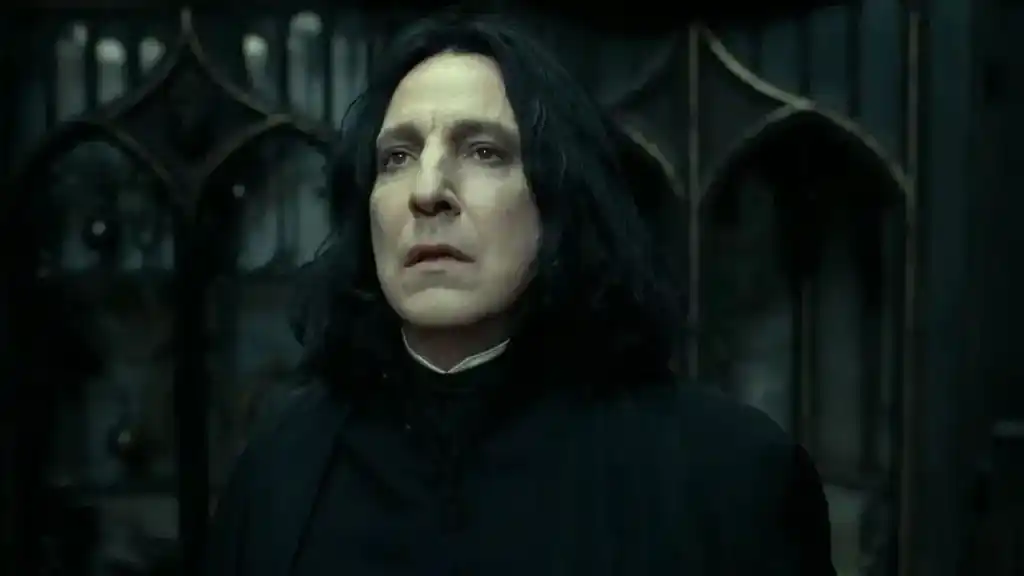
While not inherently evil, ally-antagonists create conflict by having goals or values that clash with our hero. Their motivations often stem from misguided morality, personal ambition, or misunderstanding — like a cat burglar who’s saving up for dental school or a sidekick who’s trying to hog the limelight. The flaws of ally antagonists often lie in their inflexibility, overzealousness, or inability to see the bigger picture.
Examples of ally-antagonists
Javert (Les Misérables): Inspector Javert represents the legal system taken to its extremes, pursuing the ex-convict Jean Valjean with relentless determination. His dogged adherence to justice blinds him to compassion, making him an ally-antagonist whose goals conflict with the protagonist’s moral growth.
Severus Snape (Harry Potter): Perhaps one of the most nuanced characters in Rowling’s Wizarding World, Professor Snape’s ambiguous loyalties and harsh demeanor are a constant source of tension for Harry and his friends. While his ultimate motivations are revealed to be noble (spoiler: he was trying to protect Harry all along), his many antagonistic actions throughout the series also stem from personal grievances.
Dept US Marshall Gerard (The Fugitive): As an honest lawman pursuing an accused murderer, Tommy Lee Jones’s character from this 90s classic embodies the classic ally-antagonist. His duty directly conflicts with his sense of justice as he slowly realizes that his target — Dr. Richard Kimble — might be innocent. Undoubtedly, he’s the main antagonist of The Fugitive, but he’s guided by integrity rather than malice.
Gale Hawthorne (The Hunger Games): Katniss’s erstwhile love interest from District 12 serves as an interesting ally-antagonist. Their goals align on the surface; however, Gale’s extreme approach to rebellion clashes with Katniss’s more pacifist approach, resulting in some serious saucy conflict.
3. Authority figures
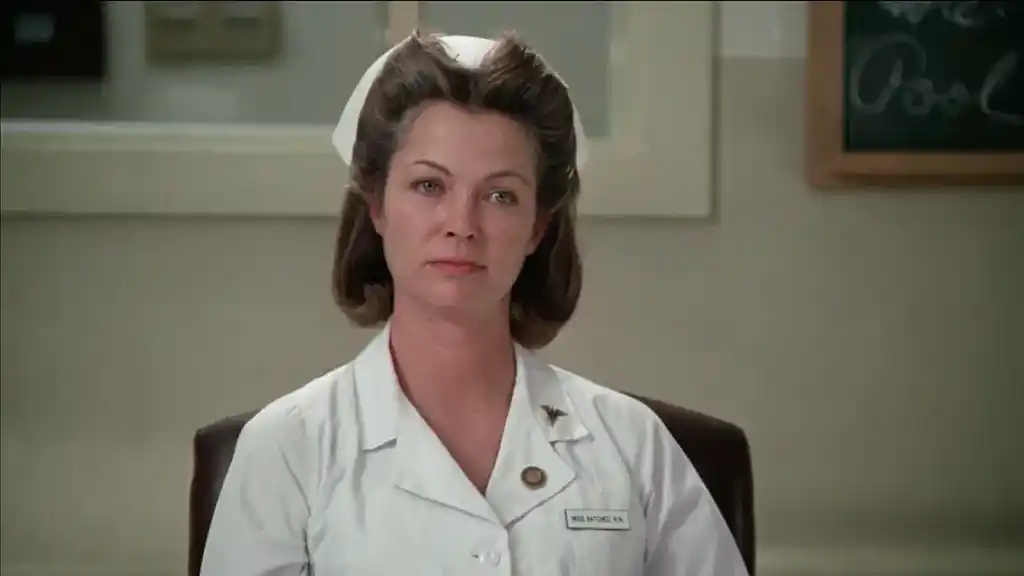
It’s actually hard to rage against the machine. After all, machines don’t usually talk back to you — they barely know you exist. But when systems or institutions are represented by actual characters in a story, that’s when things can get interesting.
If your antagonist is an authority figure, they might be motivated by a range of motivations: desire to maintain control, a fear of change, personal corruption, or even zealotry. They’re often inflexible, lacking empathy, or unwilling to adapt, making them perfect proxies for larger societal struggles.
Examples of authority figures
Nurse Ratched (One Flew Over the Cuckoo's Nest): The sociopathic Nurse Ratched wields the almighty power of The Hospital to suppress her patients and maintain control. Conflating individuality with mental illness, she constantly belittles those under her care. She pulls every lever of power available to her, from denying medication to restricting their access to basic human needs. Ratched’s manipulative and authoritarian behavior makes her a symbol of oppressive authority.
Dolores Umbridge (Harry Potter): Whether she’s a professor, ministry bureaucrat, or puppet headmistress of Hogwarts under the Voldemort administration, Dolores Umbridge is your classic petty tyrant. She wields the authority granted to her by institutions to create and enforce oppressive rules, making her a chilling antagonist. By marrying cruelty with a rigid adherence to protocol, she is the perfect representation of corrupt authority.
President Snow (The Hunger Games): The chilling thing about authoritarians is how easily they can chalk up their behavior to ‘the greater good.’ Indeed, the Capitol’s benevolent leader, Aldous Snow, has had his boot on the neck of the districts for decades. He ruthlessly quashes rebellions and keeps the working classes in check with a heady cocktail of fear and reality TV — all to maintain order.
Mayor Larry Vaughn (Jaws): The unofficial Spirit Animal of the 2020 lockdown, Amity Island mayor Larry Vaughn, refuses to close the beaches despite some, er, recent shark activities. Torn between public safety and facing an angry electorate for ruining 4th of July weekend, he does what any spineless bureaucrat would do and buries his head in the sand.
4. Natural forces
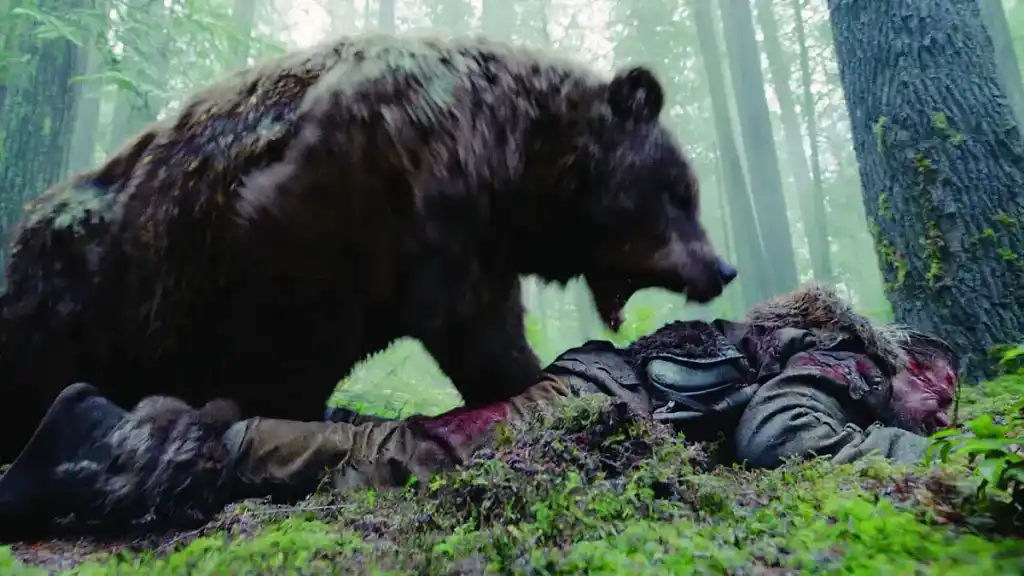
In some stories, the antagonist isn’t a person but the greatest force known to man: nature itself. What these antagonists lack in traditional motivations, they make up for with their cold, unrelenting power. They are impartial obstacles that test the protagonist’s resilience, ingenuity, and willpower. In almost all cases, when a protagonist faces off against nature, it tends to be a metaphor for hubris: this idea that humankind can overcome a greater power, be it Mother Earth or Heavenly Father.
Examples of natural forces as antagonists:
The white whale (Moby-Dick): The whale is a literal and symbolic antagonist, embodying nature’s indifference to human ambition. Captain Ahab spends every waking hour obsessing about this elusive and destructive beast, and in return, the white whale gives Ahab the Don Draper treatment: it doesn’t think about him at all.
The tornado (Twister): This natural disaster is both the antagonist and the goal. Our heroes are storm chasers looking to unlock the secrets of this weather phenomenon, but as soon as they find one, it instantly becomes a threat. If this were a Greek play, the scientists would be viewed as tragic figures daring to challenge the Gods with their puny machines.
The environment (The Revenant): In another case of Man trying to tame the wild, Leonardo Di Caprio is a fur trapper in the New World who becomes separated from his group. The film opens with Leo and pals slaughtering beavers for their pelts: now it’s time for nature (in the form of a bear and cold weather) to get a few kicks in.
The shark (Jaws): “What we are dealing with here is a perfect engine, an eating machine.” So says Richard Dreyfuss’s oceanographer about the title character in Jaws. We barely see the shark in the film, which adds another dimension to the dread — the unknown. And surely, when we think of nature as an antagonist, those questions scare us most: where is the threat, and when will it finally come for us?
5. Protagonists as antagonists

In many narratives, the protagonist eventually realizes that their greatest adversary lives within them. They cannot overcome their external conflicts while they’re still dealing with their internal conflict that arises from flaws such as fear, self-doubt, or obsession. These struggles undergird the plot, creating emotional stakes and turning specific plots into relatable stories.
Examples of Protagonist as an antagonist
Hamlet (Hamlet): Hamlet’s indecision and self-doubt provide the play's central conflict. Should he avenge his father or turn a blind eye to the killer who may now share his mother’s bed? Is his sense of justice more important than the happiness of those closest to him? Hamlet’s inability to decide at any point during the play is what drives every character’s undoing and underscores the power of internal conflict.
Nina (Black Swan): Nina’s obsession with perfection drives her ever closer to her goal of becoming the prima ballerina of one of NYC’s top companies. But this obsession also drives her psychological instability — and as she continues to chase her dream, her inner turmoil starts to blur the line between reality and delusion. While at first, she believes that a hot young member of her company is the ‘black swan’ to her Odette, she eventually discovers the black swan lives within her.
Gatsby (The Great Gatsby): What does the man who has everything want? The unattainable, of course. Having transformed himself into a multimillionaire socialite, Jay Gatsby is still haunted by his idealization of the past and obsessive pursuit of his old crush, Daisy Buchanan. His inability to let go of the past and enjoy the present ultimately leads to his downfall.
Frodo (The Lord of the Rings): It could be argued that the One Ring doesn’t create darkness within Frodo but merely lures it out with its corrupting power. Frodo’s internal struggle with the corrupting power of the Ring creates tension throughout his journey: can his better angels overcome his fear instead of driving him power-mad as it did his Uncle Bilbo?
6. Inanimate antagonists
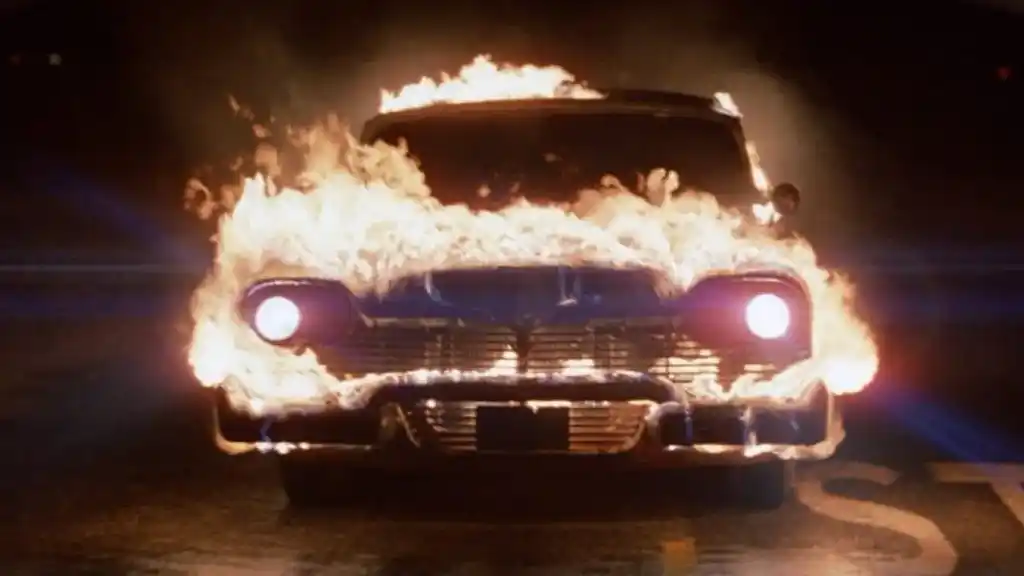
These antagonists include objects or supernatural entities that create obstacles for the protagonist. On one level, a lack of traditional motivations can make inanimate baddies unpredictable and terrifying. On the other hand, they can represent a primal fear within the protagonist or a conflicting force created by their shortcomings. So, that is to say, a demonic car isn’t just a demonic car.
Examples of inanimate antagonists:
The House (House of Leaves): In Mark Z. Danielewski’s bestselling debut novel, the antagonist is a mysterious, shifting house that defies logic and physics. It expands infinitely in all directions and incites psychological distress in those who explore it. The house functions as an antagonist by challenging the protagonist’s perception of reality to elicit paranoia. Lacking traditional motivations, it disrupts the lives of its inhabitants by preying on their greatest fears.
The Car (Christine): The title character in Stephen King’s Christine is a car with a will of its own! When nerdy teen Arnie Cunningham buys a second-hand 1958 Plymouth Fury, his life suddenly changes: his acne disappears, he no longer needs glasses, and he’s a hit with the chicks. But as we all know, getting everything you want comes with a price, and Arnie’s new four-fendered friend has an agenda of its own.
The Board Game (Jumanji): A seemingly ordinary board game takes on the role of an antagonist, bringing its fictional dangers into the real world. Each roll of the dice unleashes chaos, from rampaging animals to natural disasters, forcing the characters to keep playing to survive. While the game is not sentient, it has a distinct personality and rules its players must follow. Perhaps a metaphor for the capricious nature of life itself, the game dictates the course of events and traps its players in ever-escalating peril.
The Talisman ("The Monkey’s Paw"): In W.W. Jacobs’ short story, a cursed talisman grants wishes to those who possess it — but with horrifying consequences. If you wish for a million dollars, it will crush you under an avalanche of dimes; ask to be six inches taller, and you’ll find that only your neck gets longer. With each wish twisted into something tragic, this inanimate antagonist reminds readers that tampering with fate often comes at a terrible cost.
Understanding the various types of antagonists and their motivations can help you craft rich, multidimensional conflicts that captivate readers. Whether your antagonist is a villain, an ally, a force of nature, or even the protagonist themselves, remember that a compelling antagonist challenges the protagonist in meaningful ways, driving the story to its emotional and narrative peaks.


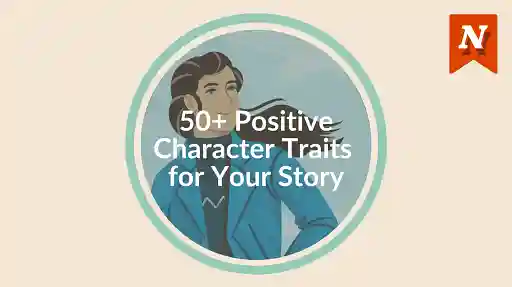

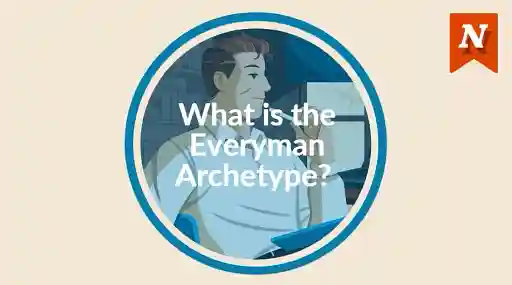
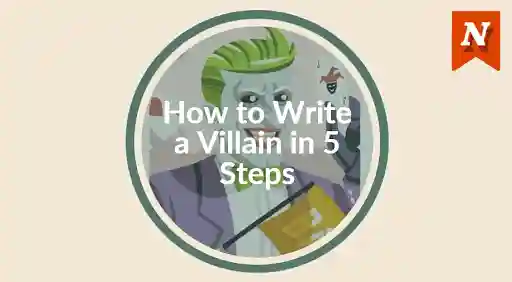

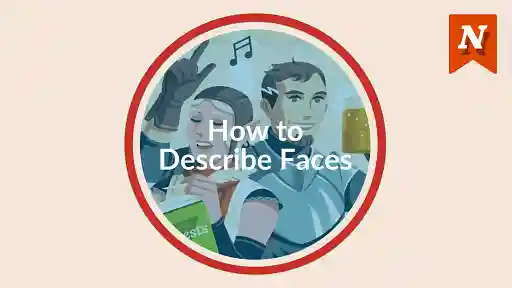



I love character driven plots so naturally, my favorite types of antagonists are the Ally and the Inner Sabateur. We all have to fight our inner demons and no matter how "good" we try to be, at one point or another, we will play antagonists in someone else's life story...and I find that fascinating.
2 Cents 'N' - Over 7 years ago
That's an interesting perspective, and true about most people being an antagonist to someone else at some point in their life. Thank you for reading and sharing your thoughts!
Bridget At Now Novel - Over 7 years ago
And the funny thing is, we never know how many people's lives we affect. We could think we're the good guys when in reality we're actually the bad guys. Or vice versa!
Renea Guenther - Over 7 years ago
Interesting idea, Renea. There's a great poem by Yevtushenko on this subject called 'People were Laughing Behind a Wall' (about not always being aware how your actions could be affecting others). It's a beautiful one if you can find it.
Bridget At Now Novel - Over 7 years ago
Oh my god! You were so right. That was a beautiful poem and so true in its meaning. I had never heard it until now. Thank you for sharing it with me!
Renea Guenther - Over 7 years ago
It's a pleasure, Renea :)
Bridget At Now Novel - Over 7 years ago
Exactly! Quick story: I went into business with a friend a few years ago. Since his wife wasn’t really doing anything, he asked her to work with me to get things going fast. I thought that was a great idea. Well, from day one, it seemed she found every possible way to sabotage every effort I made. I thought it was all in my head. After a year of hell, I was exhausted from fighting her at every step and decided for the sake of my hair and sanity, I needed to walk away. That’s when I learned the full truth. Turns out, she pitched him a business idea he rejected in order to invest in mine. It never occurred to me that I was literally, responsible for killing her dream of starting an online chewing gum shop...(how could he pass up on that, right?). Now I laugh at how clueless I was about her anger towards me. Even though she was benefiting from the business, she preferred to see it go down in a blazing fire of hurt, confusion and financial loss than to see me happy and successful. Love it!
2 Cents 'N' - Over 7 years ago
Thank you for sharing that - it could make a good story in its own right. So often this type of tension and conflict comes from lack of communication in a situation where one party is hurt and not saying so directly.
Bridget At Now Novel - Over 7 years ago
Yeah, she was wrong, but as an outsider I can see her point. It must have hurt for him to choose another business opportunity so soon after rejecting hers (no matter silly it might have been). So, I give him a bit of the blame here, too. He never should have put either of you in that position with you not at least knowing the deal. So sorry this happened to you.
Liza Lorenz Writes - Over 7 years ago
But that's exactly what I thought was so interesting...(once I was able to take all the emotions out of it) like a good novel, turns out the true antagonist was the person who seemed the least culpable...her husband. When it all came down, I found out he only wanted her there so that she would report everything that I was doing - thinking this would protect his investment somehow. But she didn't want to be there and it only made her resentful. In the end, we all lost.
2 Cents 'N' - Over 7 years ago
Antags are, perhaps, even more important than protags to story development.
Elias Mc Clellan - Over 7 years ago
Antags are important! The right one needs to be in the story for that particular hero.
Traci Kenworth - Almost 6 years ago
Thank you for sharing your perspective, Traci :)
Jordan At Now Novel - Almost 6 years ago